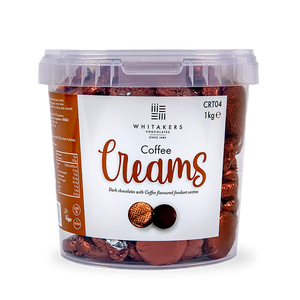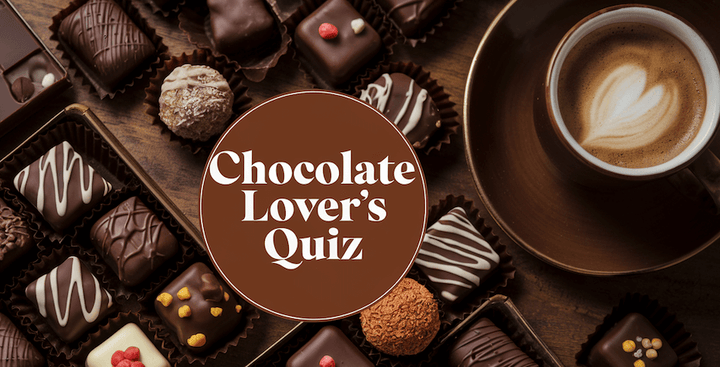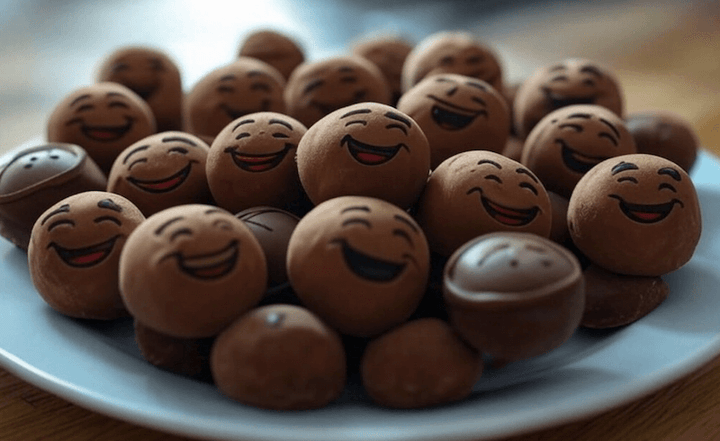Milk chocolate, with its creamy texture and indulgent taste, is a staple in the world of sweets and treats.
But have you ever wondered about the origins of this beloved confection?
The invention of milk chocolate marks a significant milestone in the history of chocolate, transforming it from a bitter beverage to the sweet, melt-in-your-mouth delight we know today.
From its early beginnings to becoming a global phenomenon, the story of milk chocolate is as rich and intriguing as its flavour.
Who Was the Inventor of Milk Chocolate?
Milk chocolate, as we know it today, was invented by Daniel Peter, a Swiss chocolatier, in 1875.
Peter's significant contribution to the chocolate industry was his innovative method of integrating milk into chocolate to create a smoother, creamier version than the existing dark chocolate.
Before Peter's invention, chocolate was primarily consumed as a bitter drink.
The challenge with adding milk to chocolate was the high water content, which didn't mix well with the cocoa butter in the chocolate and led to spoilage.
Daniel Peter overcame this hurdle by using condensed milk, an idea inspired by his neighbour, Henri Nestlé, who had developed a process for producing condensed milk.
Peter's use of condensed milk solved the problem of water content and spoilage, creating a stable form of milk chocolate that could be moulded into bars.
This innovation expanded the versatility of chocolate and made it more palatable to a broader audience, effectively changing the chocolate industry forever.
The success of milk chocolate spurred the growth of the Swiss chocolate industry and led to the establishment of some of today's major chocolate brands.
Daniel Peter's legacy lives on in the form of the creamy, sweet milk chocolate enjoyed worldwide.
Related Post: Chocolate Milk and Salt

What is Milk Chocolate?
Milk chocolate is a sweet chocolate that distinctively includes milk powder or condensed milk in addition to the primary ingredients of chocolate: cocoa solids, cocoa butter, and sugar.
This type of chocolate is characterised by its creamy texture and lighter colour than dark chocolate.
Including milk gives it a milder, sweeter taste, making it a popular choice among many chocolate lovers.
The cocoa content in milk chocolate is typically lower than in dark chocolate. It usually contains about 10-20% cocoa solids, the remainder containing milk, cocoa butter, and sugar.
This composition gives milk chocolate its characteristic smoothness and sweet, mellow flavour.
Milk chocolate is a versatile ingredient in various confectionery products, including chocolate bars, candies, baking, and desserts.
What is the History of Milk Chocolate in the UK?
The history of milk chocolate in the UK is rich and intertwined with the country's industrial and culinary heritage.
While Swiss chocolatier Daniel Peter is credited with inventing milk chocolate in 1875, it was in the UK where it found a significant place in chocolate history.
In the late 19th century, milk chocolate made its way to the UK, where it was further developed and popularised by several British chocolate companies.
This product was a game-changer in the world of chocolate.
Throughout the 20th century and into the 21st, milk chocolate continued to evolve and grow in popularity in the UK, with numerous variations and brands emerging.
It became a staple in the British diet and a significant part of the country's cultural fabric, enjoyed by people of all ages.
Today, milk chocolate remains a cornerstone of the UK's confectionery industry, with ongoing innovation and a steadfast presence in the lives of British consumers.

How is Milk Chocolate Made Today?
Making milk chocolate today involves intricate steps, combining traditional techniques with modern technology.
Here's an overview of how milk chocolate is typically made:
-
Harvesting and Fermenting Cocoa Beans: The journey of milk chocolate begins with harvesting cocoa beans from cocoa trees, primarily grown in regions near the Equator. After harvesting, the beans are fermented for several days to develop their flavour.
-
Drying and Roasting: Post-fermentation, the beans are dried and then roasted. Roasting is crucial as it brings out the chocolate flavour we're familiar with.
-
Cracking and Winnowing: The roasted beans are cracked open, and their shells are removed in a process called winnowing. The resulting product is cocoa nibs.
-
Grinding Cocoa Nibs: The nibs are ground into a fine paste known as chocolate liquor or cocoa mass. This liquor contains both cocoa solids and cocoa butter.
-
Blending Ingredients: The cocoa mass is blended with additional cocoa butter, sugar, and milk, usually in milk powder or condensed milk. The proportions of these ingredients vary depending on the desired taste and texture of the final product.
-
Conching: The mixture undergoes conching, continuously mixed and aerated in a conche (a type of machine). Conching can last from a few hours to several days and is vital to developing the chocolate's flavour and smooth texture.
-
Tempering: Next, the chocolate is tempered through a controlled process of heating, cooling, and reheating. This stabilises the cocoa butter crystals, ensuring the chocolate has a smooth, glossy finish and a good snap when broken.
-
Moulding and Cooling: The tempered chocolate is poured into moulds to give it its final shape, be it bars, coins, or other forms. It's then cooled to set.
-
Packaging: Once set, the chocolate is removed from the moulds and packaged for distribution.
Modern milk chocolate production often involves sophisticated machinery to ensure consistency and quality.
However, the fundamental process of blending cocoa with milk and sugar remains the heart of milk chocolate making, just as when it was first developed.
What is the Future of Milk Chocolate?
The future of milk chocolate looks bright and innovative, with trends and developments indicating a blend of tradition and modernity.
Here are some key aspects shaping the future of milk chocolate:
-
Health-Conscious Formulations: As consumers become more health-conscious, a growing demand for milk chocolate with reduced sugar content and healthier ingredients is growing. Producers are experimenting with alternative sweeteners like stevia and incorporating superfoods for added health benefits.
-
Sustainable and Ethical Sourcing: There's an increasing focus on sustainable and ethical sourcing of cocoa. Consumers are more aware of chocolate production's environmental and social impacts, leading to a rise in fair trade and ethically sourced milk chocolate products.
-
Artisan and Craft Chocolates: The artisan chocolate movement is gaining momentum, with small-batch producers creating unique, high-quality milk chocolate varieties. These often feature locally sourced ingredients or innovative flavour combinations, appealing to a niche market.
-
Dairy Alternatives: With the rise of veganism and dairy allergies, there's a growing market for milk chocolate made with dairy alternatives like almond milk, oat milk, or coconut milk. These products cater to those looking for dairy-free options without compromising on taste.
-
Texture and Experience Innovations: The sensory experience of chocolate is evolving, with textures playing a pivotal role. There's an interest in milk chocolate products that offer new and exciting textures, such as crunchy, chewy, or layered.
-
Personalisation and Customisation: Advances in technology could lead to more personalised chocolate experiences, where consumers can customise the flavour, shape, and packaging of their milk chocolate.
-
Environmental Impact: There’s a strong trend towards more environmentally friendly packaging and production methods, reducing the carbon footprint of chocolate production.
The future of milk chocolate will be more diverse, health-oriented, ethically responsible, and innovative, catering to evolving consumer tastes and concerns while retaining the classic appeal that has made it a beloved treat worldwide.
Where Can You Buy Tasty Milk Chocolate?
As experts in crafting chocolates, we at Whitakers pride ourselves on using the finest and most natural ingredients.
Many of our milk chocolate creations are naturally gluten-free, catering to a diverse range of dietary preferences.
Our extensive range includes everything from classic chocolate bars and luxurious truffles to our delightful chocolate Neapolitans and the famous wafer thins. Each product is a testament to our commitment to quality and the art of chocolate making.
Some Notes From an Expert Chocolatier
As an expert chocolatier, I am immensely proud to be part of the long and rich history of chocolate making.
This tradition, rooted in centuries of craftsmanship and innovation, is not just about creating delectable treats; it's about upholding a legacy of artistry and quality.
Each piece of chocolate we craft is a blend of time-honoured techniques and contemporary flavours, a testament to the enduring allure of chocolate.
Being a custodian of this culinary art is a privilege and a responsibility as we continue to bring joy and indulgence to chocolate lovers worldwide.
Final Notes On the Invention of Milk Chocolate
The invention of milk chocolate represents a pivotal moment in the history of confectionery, marking a transition from the bitter chocolate drinks of the past to the sweet, creamy delights we enjoy today.
The innovation by Daniel Peter, with the crucial addition of condensed milk, not only broadened chocolate's appeal but also set the stage for the diverse world of chocolate we know now.
This groundbreaking development has led to various milk chocolate products deeply ingrained in cultures worldwide.






















